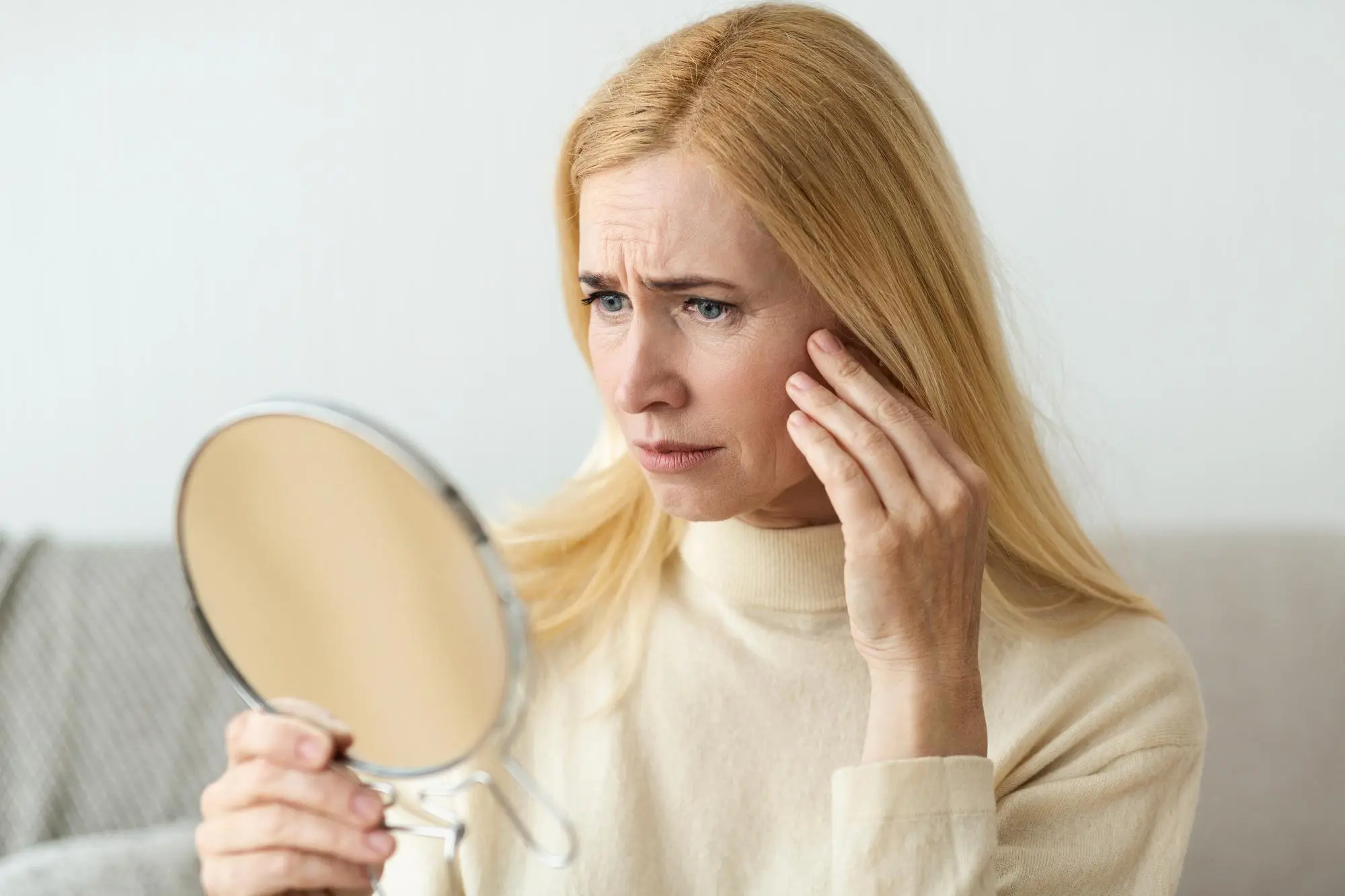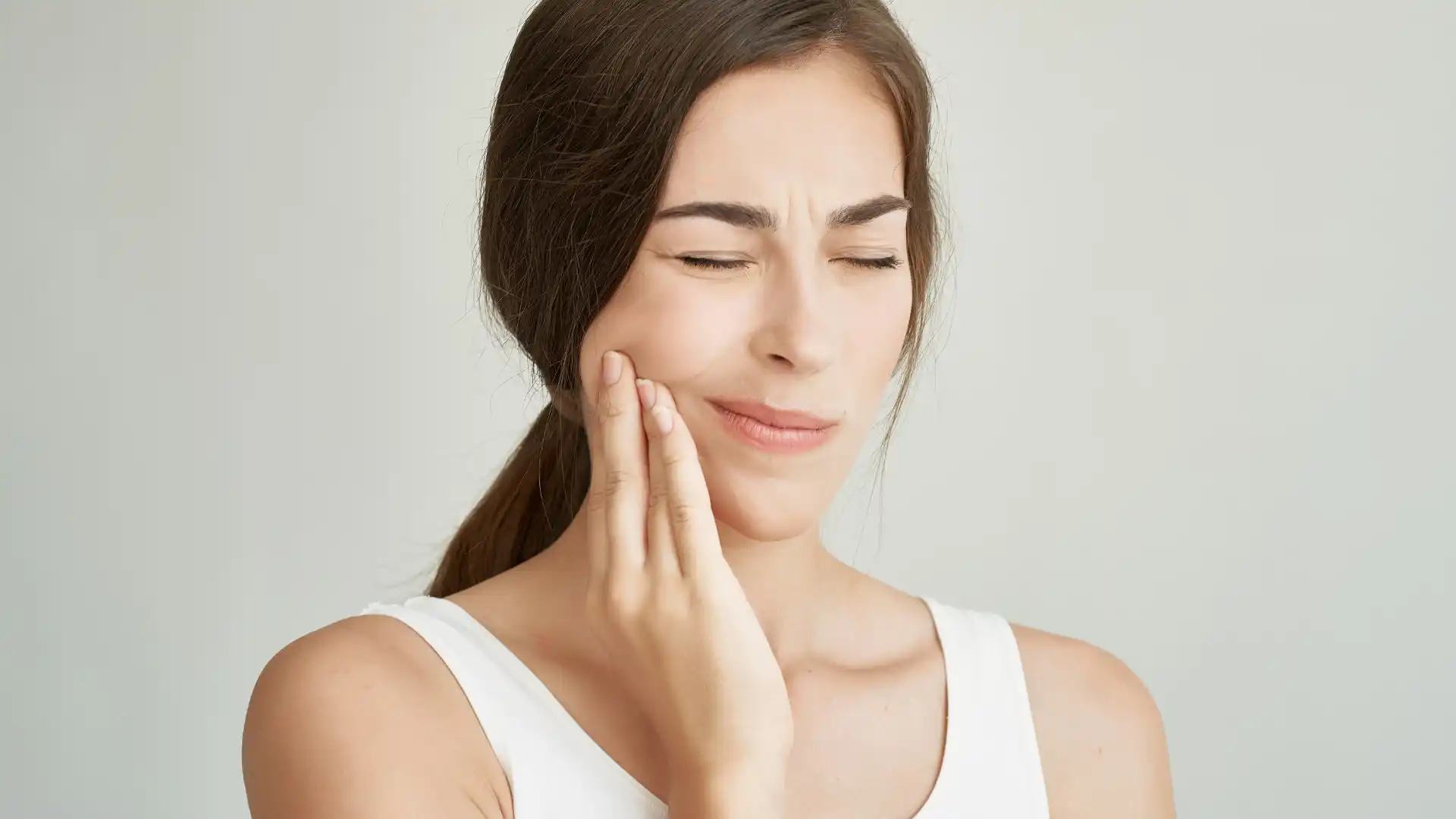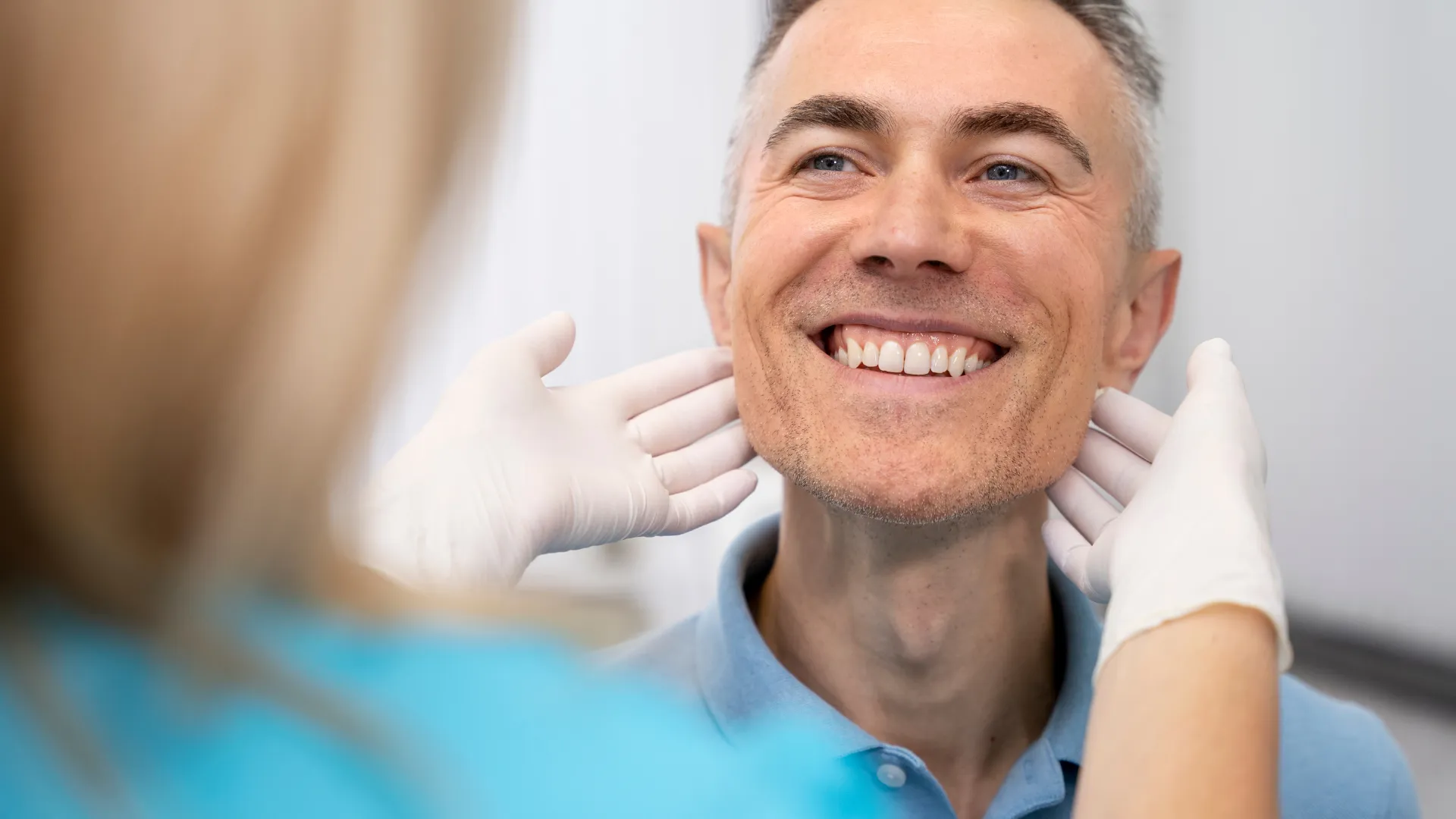Welcome to our comprehensive guide on Bell’s Palsy, a condition that affects thousands of people worldwide. Imagine waking up one day to find that one side of your face feels weak, and you can’t smile or close your eyes properly. This sudden facial paralysis is known as Bell’s Palsy.
In this blog, we will delve into the various aspects of Bell’s Palsy, from its symptoms and available medications to non-medical therapies, treatments, and recovery expectations.
Whether you or a loved one are facing this challenging condition, we aim to provide valuable insights to help you navigate the journey to recovery.
What Is Bell’s Palsy (Facial Paralysis)?
Bell’s Palsy, also known as Facial Paralysis, is a condition where one side of your face suddenly becomes weak or paralyzed. Imagine trying to smile, but only half of your face responds. It happens when a nerve that controls your facial muscles gets inflamed or compressed, but the exact cause isn’t always clear.
Don’t worry, though! The good news is that Bell’s Palsy often gets better on its own with time. Doctors might prescribe medications to speed up your recovery and reduce inflammation. Physical therapy and exercises can also help strengthen your facial muscles and make you feel better faster.
While dealing with Bell’s Palsy can be tough, remember that you’re not alone. With the support of your healthcare team and loved ones, you can overcome this challenge and regain your beautiful smile. Stay positive and patient, and soon you’ll be on the road to recovery!
Identifying Bell’s Palsy Symptoms: Facial Weakness and Paralysis
Imagine waking up one morning and noticing something unusual when you look in the mirror. Your face seems a bit off; one side feels weak, and you can’t move it properly. It’s like your smile is playing hide-and-seek, and you struggle to close one eye completely.
Other common bell’s palsy symptoms include increased sensitivity to sound (hyperacusis) and changes in taste. If you experience any of these symptoms, seeking medical attention promptly is crucial to ensuring proper diagnosis and treatment.
Well, this could be a sign of Bell’s Palsy! It’s a condition where the muscles on one side of your face become weak or paralyzed. Don’t worry; it’s not your fault. Bell’s Palsy happens when a special nerve, which controls your facial expressions, gets upset due to swelling or pressure.
If you experience these strange facial changes, don’t ignore them! Reach out to a doctor right away. Early detection and treatment can make a big difference in your recovery.
Remember, you’re not alone in this journey. Stay positive and seek help from your healthcare team and loved ones. Together, we’ll face Bell’s Palsy head-on and work towards bringing back your radiant smile!

Bell’s Palsy Medication: Available Treatment Options
When it comes to treating Bell’s Palsy, there are some helpful bell’s palsy medications available to speed up your recovery. Think of them as your allies in the battle against facial paralysis!
One of the main bell’s palsy medication is corticosteroids – these are like the firefighters of inflammation. They work to reduce swelling and inflammation around the facial nerve, helping it heal faster.
Another hero in the team is antiviral medication. Just like a superhero fighting the bad guys, antivirals target viral infections that might be causing the Bell’s Palsy in the first place.
Remember, the key is early action! If you notice any facial weakness or strange symptoms, don’t wait. Reach out to your doctor, and they’ll guide you on the right medication path.
Stay positive and let these medications work their magic while you focus on getting better. With the right treatment and support, you’ll be one step closer to winning the battle against Bell’s Palsy and reclaiming your smile!
Exploring Non-Medical Bell’s Palsy Therapies and Remedies
When it comes to Bell’s Palsy recovery, there are some natural therapies and remedies that can lend a helping hand. Think of bell’s palsy therapies as gentle but effective companions on your healing journey!
One fantastic ally is physical therapy. It’s like a tailored workout routine for your facial muscles. By doing specific exercises and facial massages, you can stimulate the affected nerve and muscles, bringing them back to their full strength.
Imagine a soothing spa day for your face! Heat therapy is another technique that can work wonders. Applying warm compresses can relax your facial muscles and promote blood flow, aiding in your recovery process.
And here’s a secret weapon – facial exercises! They’re like little workouts that target your facial muscles. These exercises help you regain control over your expressions and speed up your progress.
Remember, it’s all about staying consistent and positive! These non-medical bell’s palsy therapies, when combined with traditional treatments, can be a powerful duo in your journey to reclaiming your smile.
Embrace these natural remedies and therapies with enthusiasm, and let your face feel the difference. With patience and dedication, you’ll be well on your way to a happy and confident recovery from Bell’s Palsy!
Effective Facial Nerve Palsy Treatment Approaches
When it comes to facial nerve palsy treatment, there are some really effective approaches that can make a big difference in your recovery journey. Think of them as special techniques designed to help your face get back to its best!
One approach that works like magic is nerve stimulation. It’s like a gentle nudge to wake up your facial muscles. Techniques like transcutaneous electrical nerve stimulation (TENS) use tiny electrical pulses to retrain your muscles and get them moving again.
Now, here’s a fascinating technique – biofeedback therapy. Imagine it as a communication workshop for your facial expressions. It helps you gain better control over your facial movements, so your smile looks natural and beautiful.
Remember, the key to success is staying committed and positive! Combining these effective facial nerve palsy treatments with other treatments will set you on the path to a full recovery from facial nerve palsy. With determination and the right treatments, you’ll soon be smiling with confidence once more!

Unraveling the 7th Cranial Nerve Palsy: Causes and Management
The 7th cranial nerve is like a conductor for your facial expressions – it controls how you smile, frown, and show emotions. But sometimes, this nerve faces challenges, and that’s when 7th cranial nerve palsy happens.
Imagine this nerve as a delicate string in your body. It can get irritated or compressed, causing it to misbehave. The result? Facial weakness or even paralysis on one side of your face.
The causes can be puzzling, like trying to solve a riddle. It could be linked to viral infections, injuries, or even tumors putting pressure on the nerve. But don’t worry, Sherlock Holmes! Your healthcare team will help uncover the cause through careful examination and tests.
Now, let’s talk about management – it’s like a puzzle-solving strategy! Treatments will depend on the cause. If it’s a viral culprit, antiviral medication might come to the rescue. For inflammation, corticosteroids can be superheroes, reducing swelling and promoting healing.
Remember, early detection is crucial! Once the cause is identified, your healthcare team will tailor the best management plan for you. Stay positive and trust in their expertise – soon, you’ll be one step closer to solving the puzzle of the 7th cranial nerve palsy and restoring your beautiful smile!
Navigating Bell’s Palsy Rehabilitation: Physical Therapy and Exercises
Picture it as a workout routine, but for your face! Just like you’d exercise to keep your body fit, these special exercises target your facial muscles. They help stimulate the affected nerve, promoting healing and restoring movement.
Think of your facial muscles as superheroes, getting stronger with each exercise! Physical therapy involves gentle massages and techniques that coax your muscles back into action.
It’s like a personal training session, but for your face! Your healthcare team will design a custom plan to suit your needs. Staying dedicated to these exercises is the key to success.
Imagine a new, confident you, smiling brightly! With the support of physical therapy and exercises, you’ll be well on your way to overcoming Bell’s Palsy and embracing the joy of life once more!
Trust the process and keep that positive spirit shining as you navigate this rehabilitation journey. Soon, your smile will light up the world again!
Support and Coping: Mental Health During Bell’s Palsy Recovery
Support and coping during Bell’s Palsy recovery are like having a comforting friend by your side, cheering you on every step of the way!
Dealing with Bell’s Palsy can be emotionally challenging, like a rollercoaster of feelings. It’s okay to feel worried or frustrated, but remember, you’re not alone! Reach out to your loved ones, they’ll be your pillars of strength.
Think of it as a support group where you can share your journey with others who understand. Joining such a group can be a game-changer, knowing you’re not the only one facing this challenge.
Just like physical healing, your emotional well-being is equally important! Talk to a mental health professional if you need someone to listen and guide you through this process.
Imagine a wellspring of positivity within you! Practice mindfulness and self-care, like taking time for hobbies or relaxation. These little moments can lift your spirits during this healing phase.
Trust that you’ll overcome this hurdle! Stay patient with yourself and celebrate each step, big or small. With the right support and coping strategies, you’ll embrace your inner strength and emerge even more resilient from Bell’s Palsy recovery. Remember, you’ve got this!
Bell’s Palsy in Children: Diagnosis and Care
Bell’s Palsy in children is like a rare guest that sometimes knocks on their little faces. It’s a condition where one side of their face may suddenly become weak or paralyzed, just like in grown-ups.
But don’t worry, superheroes are here to help! If you notice any unusual facial changes in your child, reach out to their doctor right away. Early detection is essential for the best care.
Imagine a detective investigating the case! The doctor will carefully examine your child’s face and may do some tests to understand what’s happening. It’s all to ensure the right diagnosis and treatment.
Now, let’s talk about care—think of it as a special plan for your little hero! Your child’s healthcare team, like Dr. Burak Sercan, will design a personalized approach to help them recover. It may involve medications or physical therapy, like gentle exercises to strengthen their facial muscles.
Remember, you’re the sidekick on this journey! Offer love and support, and be their biggest cheerleader. With your care and the expert guidance of healthcare professionals, your child will conquer Bell’s Palsy and get back to their joyful self in no time!
Bell’s Palsy Recovery: Tips and Expectations
Every individual’s journey to recovery is unique. Bell’s Palsy recovery is like a fascinating adventure with ups and downs, but there’s a treasure trove of hope waiting for you at the end!
Here are some valuable tips to guide you along this journey:
- Patience is your compass: Healing takes time, and every step counts. Stay positive and trust in your body’s ability to recover.
- Follow the treasure map: Stick to your doctor’s advice and treatment plan. Early action and consistent care make a big difference.
- A smile is your ultimate treasure: Embrace facial exercises and physical therapy to regain your beautiful smile. Your facial muscles will thank you!
- Look for allies: Surround yourself with supportive loved ones and seek help from support groups. Together, you’re stronger!
- Mindfulness is your compass: Take care of your emotional well-being. Practice mindfulness and self-care to stay centered.
- Celebrate victories, big and small: Each improvement is a precious gem. Acknowledge your progress and celebrate it.
Expect a treasure trove of strength and resilience within you! Bell’s Palsy recovery might have its challenges, but with determination and support, you’ll reach the treasure of renewed confidence and joy. Keep going, and soon, your smile will shine brighter than ever before!

Bell’s Palsy FAQ
What Is the Best Medicine for Bell’s Palsy?
The best medicine for Bell’s Palsy often includes corticosteroids, like prednisone. These superheroes help reduce inflammation around the facial nerve, speeding up recovery. Your doctor will recommend the right medication based on your unique situation.
What Helps Bell’s Palsy Heal Faster?
To boost Bell’s Palsy healing, combine traditional treatments with non-medical therapies. Physical therapy and facial exercises are like workout buddies for your facial muscles. Stay committed to these and follow your doctor’s advice for faster progress.
What Is the First Line Treatment for Bell’s Palsy?
The first line of treatment usually involves corticosteroids, as they are known to be effective in reducing inflammation. Early administration of these medicines is crucial for better outcomes.
Can Bell’s Palsy Be Cured Without Steroids?
Yes, Bell’s Palsy can be cured without steroids, but using corticosteroids has been shown to improve recovery speed and outcomes. Your doctor will decide the best treatment plan based on your specific condition.
How Long Will Bell’s Palsy Last?
Bell’s Palsy varies from person to person. Some may recover within weeks, while others might take a few months. Patience is essential, as most people experience significant improvement in the first three months.
Is Bell’s Palsy Caused by Stress?
The exact cause of Bell’s Palsy isn’t always clear, but stress alone is not a direct cause. Viral infections and inflammation are more likely triggers. Reducing stress can still be beneficial for overall well-being during the recovery period.
Do People Fully Recover From Bell’s Palsy?
Yes, the majority of people with Bell’s Palsy fully recover! With timely treatment and dedicated care, your facial nerve can heal, and your smile will return to normal.
What Foods Should You Avoid With Bell’s Palsy?
Avoid hard-to-chew foods to prevent straining facial muscles. Opt for soft, easily chewable meals that are gentle on your face. Stay hydrated and focus on a balanced diet for a smoother healing journey.
Bell’s Palsy Treatment with MD. Burak Sercan
Bell’s Palsy is a condition that demands prompt attention and a comprehensive treatment approach. From identifying symptoms and exploring available medication to non-medical therapies and effective bell’s palsy treatment approaches, understanding the intricacies of Bell’s Palsy is essential for successful recovery.
At Dr. Burak Sercan clinic, we are dedicated to providing comprehensive and personalized Bell’s Palsy and facial treatment plans. Our team of experts employs the latest medical advancements, combined with holistic approaches, to help patients achieve the best possible recovery. With our tailored therapies and unwavering support, we aim to empower individuals on their path to healing and renewed confidence.
Remember, you are not alone in this journey. Seek support from healthcare professionals, loved ones, and reputable treatment centers like MD. Burak Sercan, where specialized care and personalized treatment plans can make a significant difference. Embrace optimism and dedication, for with the right support and care, the road to recovery from Bell’s Palsy can be both transformational and empowering.











